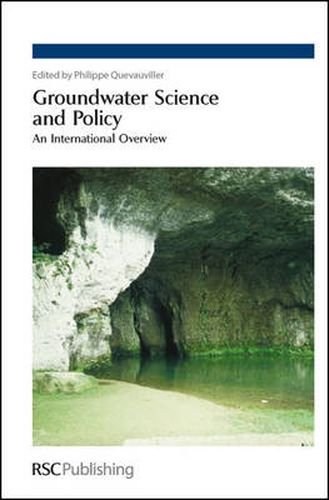Readings Newsletter
Become a Readings Member to make your shopping experience even easier.
Sign in or sign up for free!
You’re not far away from qualifying for FREE standard shipping within Australia
You’ve qualified for FREE standard shipping within Australia
The cart is loading…






Until recently, focus on groundwater mainly concerned its use as drinking water and as an important resource for industry (e.g. cooling waters) and agriculture (irrigation). It has, however, become increasingly obvious that groundwater should not only be viewed as a drinking water reservoir, but that it should also be protected for its environmental value. In this respect, groundwater represents an important link of the hydrological cycle through the maintenance of wetlands and river flows, acting as a buffer through dry periods. Hence, deterioration of groundwater quality may directly affect other related aquatic and terrestrial ecosystems. The groundwater legislative framework under the EU Water Framework Directive and the newly adopted Groundwater Directive establishes criteria linked to environmental objectives which have to be met by 2015 following successive operational steps including characterisation, risk assessment (analysis of pressures and impacts), monitoring and design of programmes of measures. These milestones require that sound technical and scientific information be made accessible to water managers, which is so far still not sufficiently streamlined. In this context, this book describes the groundwater legislative milestones and presents series of research and development activities that aim to directly support them. It has, therefore, the ambition to become a vehicle liaising policy requirements and available scientific knowledge in this area.
$9.00 standard shipping within Australia
FREE standard shipping within Australia for orders over $100.00
Express & International shipping calculated at checkout
Until recently, focus on groundwater mainly concerned its use as drinking water and as an important resource for industry (e.g. cooling waters) and agriculture (irrigation). It has, however, become increasingly obvious that groundwater should not only be viewed as a drinking water reservoir, but that it should also be protected for its environmental value. In this respect, groundwater represents an important link of the hydrological cycle through the maintenance of wetlands and river flows, acting as a buffer through dry periods. Hence, deterioration of groundwater quality may directly affect other related aquatic and terrestrial ecosystems. The groundwater legislative framework under the EU Water Framework Directive and the newly adopted Groundwater Directive establishes criteria linked to environmental objectives which have to be met by 2015 following successive operational steps including characterisation, risk assessment (analysis of pressures and impacts), monitoring and design of programmes of measures. These milestones require that sound technical and scientific information be made accessible to water managers, which is so far still not sufficiently streamlined. In this context, this book describes the groundwater legislative milestones and presents series of research and development activities that aim to directly support them. It has, therefore, the ambition to become a vehicle liaising policy requirements and available scientific knowledge in this area.